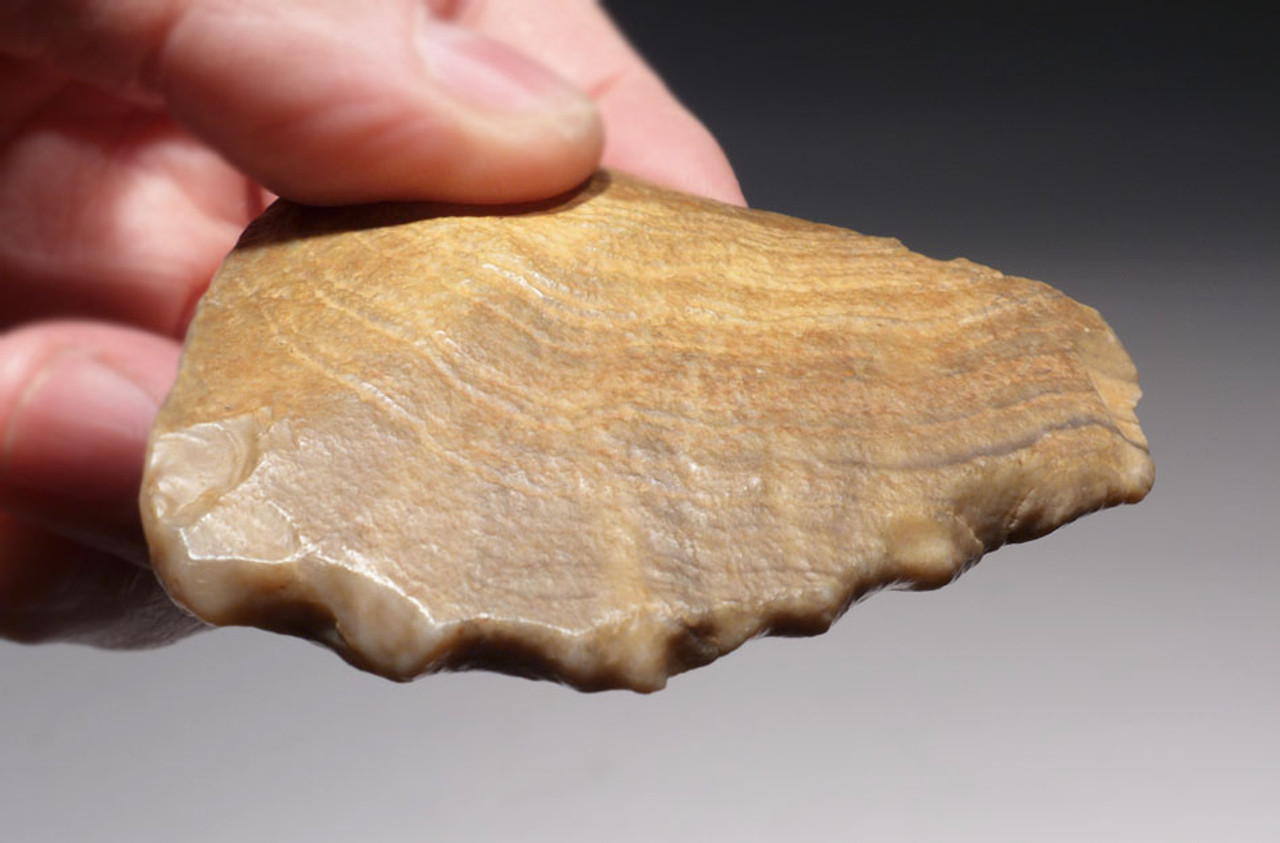Product Description
ITEM #
|
AT071
|
||
ID
|
Mousterian Tool
|
||
FOUND
|
Exposed Site - Sahara Desert, NW Africa
|
||
AGE
|
MOUSTERIAN: 60,000 - 30,000 years ago
|
||
SIZE
|
3.75" long x 2.5" wide
|
||
CONDITION
|
INTACT AND COMPLETE - NO REPAIR OR
|
||
NOTE
|
AFRICAN MOUSTERIAN TOOLS
|
||
INCLUDES DISPLAY BOX - Actual Item - One Only
Comes with a certificate of authenticity / information sheet |
|||
CLICK HERE TO LEARN MORE ABOUT MOUSTERIAN TOOLS
This is a masterfully executed Mousterian SIDE SCRAPER of the finest possible quality and condition displaying a backed side with a depression for a finger grip. The lithic is unusual being tabular flint and the millennia of time exposed on the surface has created a terraced surface from wind erosion. A well worn cutting edge on one side is beautifully executed showing extensive secondary flaking. This is a RARE tool and one that is incredibly aesthetic. EXACTLY AS MADE IN ORIGINAL UN-DAMAGED CONDITION. A natural desert wind erosion along with bi-color patina are traits found only in authentic Paleolithic Saharan artifacts caused by long-term exposure on one side. NO REPAIR AND NO RESTORATION.
This flake tool was fashioned out of tabular flint in the Mousterian tradition and used by primitive humans between approximately 80,000 and 40,000 years ago in North Africa. It was collected from an exposed Mousterian site in the Northwestern Sahara Desert of North Africa. The tool tradition of the Neanderthals in Europe is called the Mousterian Tradition. The Mousterian Tool Culture is found in one of the longest and most spectacular sequences in the whole of North Africa. Several open and cave sites are documented. Oddly, the North African Mousterian technology appears as fully developed unlike the gradual formative stages found in Europe. Evidence suggests that North Africa was populated by Neanderthals moving down from southern Europe in pursuit of hunting migrating populations of certain Euro-Asiatic animals of the period, as they entered northern Africa.
 US DOLLAR
US DOLLAR
 EURO
EURO
 AUSTRALIAN DOLLAR
AUSTRALIAN DOLLAR
 CANADIAN DOLLAR
CANADIAN DOLLAR
 POUND STERLING
POUND STERLING






















